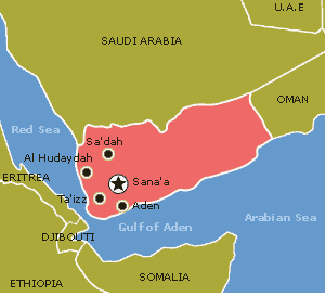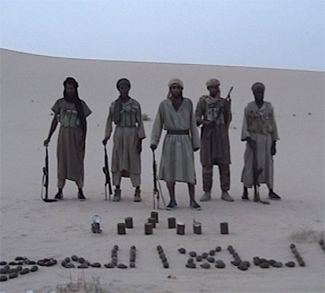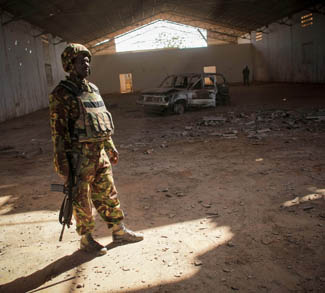Summary
The US State Department wants to open channels to non-state actors, but its policy at the practical level is still muddled.
Analysis
Barrack Obama entered his term of the American presidency aiming to set a different tone for US foreign policy. One initiative which illustrates a change in attitude came in 2010 when the US State Department issued a Quadrennial Diplomatic and Development Review (QDDR). It was the first of its kind to be published, and emulated the long-standing Quadrennial Defense Review (QDR).
This first-ever QDDR, titled “Leading through Civilian Power,” set a course for US diplomacy of “engaging beyond the state.” Crisis and conflict resolution were to be regarded as a central national security objective, so the goal articulated in the QDDR was one of broadening US diplomatic efforts to include non-state actors.
Limiting US foreign relations to state-to-state diplomacy flies in the face of recent global developments. Since 2008, conflicts between a state and one or more non-state armed groups (NSAGs) have vastly outnumbered inter-state conflicts, according to the Human Security Report 2009/2010.
But according to a report released in October 2011 by the Council on Foreign Relations and authored by Foreign Service officer Payton Knopf, “little work has been done to prepare US diplomats for analyzing and engaging with the most influential non-state actors and participants in the world’s conflicts.”
“The State Department needs clear guidelines as to why, when, and how its diplomats should conduct such outreach,” Knopf told ISN Insights.
One problem that impedes engaging with NSAGs is that they are often classified as terrorist organizations. The term ‘terrorist’ is however sometimes used as a politically-motivated weapon against a target NSAG.
“While all terrorist groups are by definition NSAGs, not all NSAGs are terrorist groups,” Knopf acknowledged. “But the State Department has shied away from engagement with many NSAGs.”
In other words, the fact that an organization is merely referred to as an NSAG may have the effect of proscribing contact with it.
This reluctance has already thwarted several conflict resolution and humanitarian efforts in recent years. In one case, the Communist Party of the Philippines–New People’s Army–National Democratic Front (CPP-NPA-NDF) withdrew from peace talks in August 2004 after the US placed the group on its terrorist list.
Politics and utility
A number of international studies have argued for the utility in engaging NSAGs on such issues as eliminating sexual violence in armed conflict, development, and in the Anti-Personnel Mine Ban Convention.
In the case of the Anti-Personnel Mine Ban Convention, the international community has begun to recognize the value of engaging NSAGs in the effort to extend the ban on landmines beyond the state signatories to the convention. For example, the Bangkok Declaration issued at the end of the Fifth Meeting of States Parties to the Anti-personnel Mine Ban Convention in 2003, stated that “progress to free the world of anti-personnel mines will be enhanced if non-state actors embrace the international norm established by the Convention and welcomes efforts by NGOs in engaging Non-State Armed Actors to this end”. The declaration also encouraged states in a position to do so to facilitate this work. Similar conclusions were reached by the African Union and by the Parliamentary Assembly of the Organization for Security and Co-operation in Europe ( OSCE) in 2004.
The relationship between conflict resolution and development, an explicit element of the QDDR, was underscored in a World Bank report which argued that civil war is “development in reverse.” “War retards development, but conversely, development retards war,” said the report. “Where development succeeds, countries become progressively safer from violent conflict, making subsequent development easier. Where development fails, countries are at high risk of becoming caught in a conflict trap in which war wrecks the economy and increases the risk of further war.”
US foreign policy to date has been muddled when it comes to dealing with NSAGs. Obama authorized dialogue with the Taliban in 2011, but in 2009 took pains to distinguish the utility of engaging with NSAGs as opposed to adversary states such as Iran. “Iran is a huge, significant nation-state that has been recognized as such,” Obama said, in an interview with National Public Radio. “Hizbullah and Hamas are not. And I don’t think that we have to approach those entities in the same way.”
Obama’s distinction may have been motivated as much by politics as principle: Engaging with Hamas would provoke opposition from domestic constituencies in the United States and could impact relations with Israel, the Palestinian Authority, and others.
Knopf, in outlining a framework for engaging with NSAGs, recognizes that politics will inevitably enter into the equation.
“However,” he argued, “rather than an assessment of the political implications serving as the first step in an analytical process for evaluating the rationale for engagement, it should instead be included among a variety of factors determining the costs and benefits of such engagement.”
A framework for engagement
Knopf advocates a three-tiered approach for deciding whether to engage an NSAG: developing a profile of the NSAG; defining the US objective with respect to the NSAG; and weighing the costs and benefits of engagement with an NSAG. Knopf believes that seven fundamental characteristics are key to understanding the makeup of a group: leadership, military effectiveness, constituency, degree of territorial control, political platform, sponsorship and needs.
Knopf is not alone in his efforts to develop a framework for NSAG engagement: United Nations Secretary-General Ban Ki-Moon has also called for measures to address “all parties” in armed conflicts. He has called for the development of a best-practices manual designed to outline “terms of engagement with armed groups, to better assist coordination and to facilitate more effective negotiations.”
“It is critically important that humanitarian actors are able freely to make contact with non-state actors to negotiate fundamental issues like humanitarian access, regardless of the relationships between the state and the rebel groups,” said the Secretary-General in a report to the UN Security Council.
The problem for both the UN and the US is that they both still operate in a state-centric system, making interaction with non-state actors complicated. But Knopf urges policymakers to “consider that, since the 1980s, the number of conflicts that ended with a peace agreement is four times higher than the number of conflicts that ended through military victory. Given the preponderance of NSAGs in today’s conflicts, contact may, in fact, be more effective than isolation or military action.”
Peter A Buxbaum is a contributor to Geopoliticalmonitor.com



